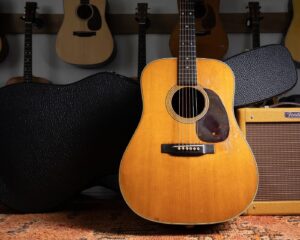RFID stickers are a powerful innovation in many industries. They can track tools, equipment, inventory and assets. They also allow for anti-counterfeiting traceability. They can also be used to identify people at an event.
These labels have a more comprehensive reading range than barcodes and can be read without complete visibility or direct line of sight. They can also help reduce cycle count time and auto-reorder products at safety stock levels.
Anti-counterfeiting traceability
 The anti-counterfeiting traceability feature of ramprfid.com RFID stickers helps to protect a brand’s reputation and prevents counterfeit products from entering the supply chain. It can also help track a product from the point of manufacture to its destination. It does this by enabling unambiguous identification of the product and providing proof of its authenticity. It is a critical component of the traceability process and is required by the EU Falsified Medicines Directive, FDA Drug Supply Chain Security Act, and Russian Crypto Code laws. RFID tags contain a tiny transponder that stores individual product information, allowing for fast real-time tracking and authentication. These tags can detect possible manipulation, and the technology is robust enough to resist tampering. They can be paired with unique RFID readers to make a high-level audit of the entire supply chain, making them an effective deterrent against fraud.
The anti-counterfeiting traceability feature of ramprfid.com RFID stickers helps to protect a brand’s reputation and prevents counterfeit products from entering the supply chain. It can also help track a product from the point of manufacture to its destination. It does this by enabling unambiguous identification of the product and providing proof of its authenticity. It is a critical component of the traceability process and is required by the EU Falsified Medicines Directive, FDA Drug Supply Chain Security Act, and Russian Crypto Code laws. RFID tags contain a tiny transponder that stores individual product information, allowing for fast real-time tracking and authentication. These tags can detect possible manipulation, and the technology is robust enough to resist tampering. They can be paired with unique RFID readers to make a high-level audit of the entire supply chain, making them an effective deterrent against fraud.
Counterfeiting is a global problem that affects the global economy and threatens to undermine consumer confidence in products. According to the International Anti-Counterfeiting Coalition, counterfeit goods are estimated to cost manufacturers $600 billion annually. Creating counterfeits involves illegally manufacturing and selling goods without the original manufacturer’s authorization. It can also contribute to organized crime, human trafficking and terrorist activities.
Despite the many benefits of RFID, counterfeiting is still an issue that plagues many companies and consumers. Fortunately, researchers at the University of Arkansas have developed a new technology to stop counterfeit RFID tags from being cloned. This technology, based on the unique physical attributes of the tag, will significantly enhance security and privacy for governments, businesses and consumers.
The technology can track tools, equipment, inventory, and other assets. It can also be used to monitor shipments and manage supply chains. In addition, ramprfid.com RFID stickers can be used to store a person’s identity or to control access to facilities. It can also track products and provide consumers with a more exciting shopping experience. It can even be used as a ring to wake you up, share Wi-Fi passwords securely, switch navigation mode automatically, or create a hotspot for your laptop.
Intelligent library system
The intelligent library system features RFID stickers, providing various smart functions. It is a valuable tool for libraries wanting to provide their patrons with better service and a more user-friendly experience. This system can also reduce staff workloads by automating many of the library’s technological operations. Moreover, it can ensure the security of the library’s collections.
RFID tags are thin and can be attached to a book or document. The tag stores a primary item identifier and other information about the item, including its location in the library. The title can be read from any angle, allowing for easy tracking. In addition, the information stored in an RFID tag can be updated remotely without a manual process. These tags are ideal for the library environment, as they are more reliable than barcodes and can be easily read by computers.
Intelligent Library System also offers a range of other benefits, such as real-time registration of loans/returns and control of due dates. The technology also allows library users to access a wealth of information from home, such as title availability and the book’s status (available, checked out, etc.).
This system also helps to eliminate the need for staff intervention at checkout. It can significantly reduce the time spent on checkouts and return processing. Consequently, it can increase the efficiency of library staff and free them up for more critical tasks.
Asset management
Managing assets is one of the most important aspects of any business. It is a process that helps companies to get the most value from their investments and save money by reducing unnecessary costs. It includes planning, operation, maintenance, and renewal of organizational assets. It also involves analyzing the cost patterns of these assets and assessing their potential impact on the company’s performance. This information is used to plan future expenditures and minimize risks. Understanding the different types of asset management and how they relate to one another is essential.

 Many people who
Many people who